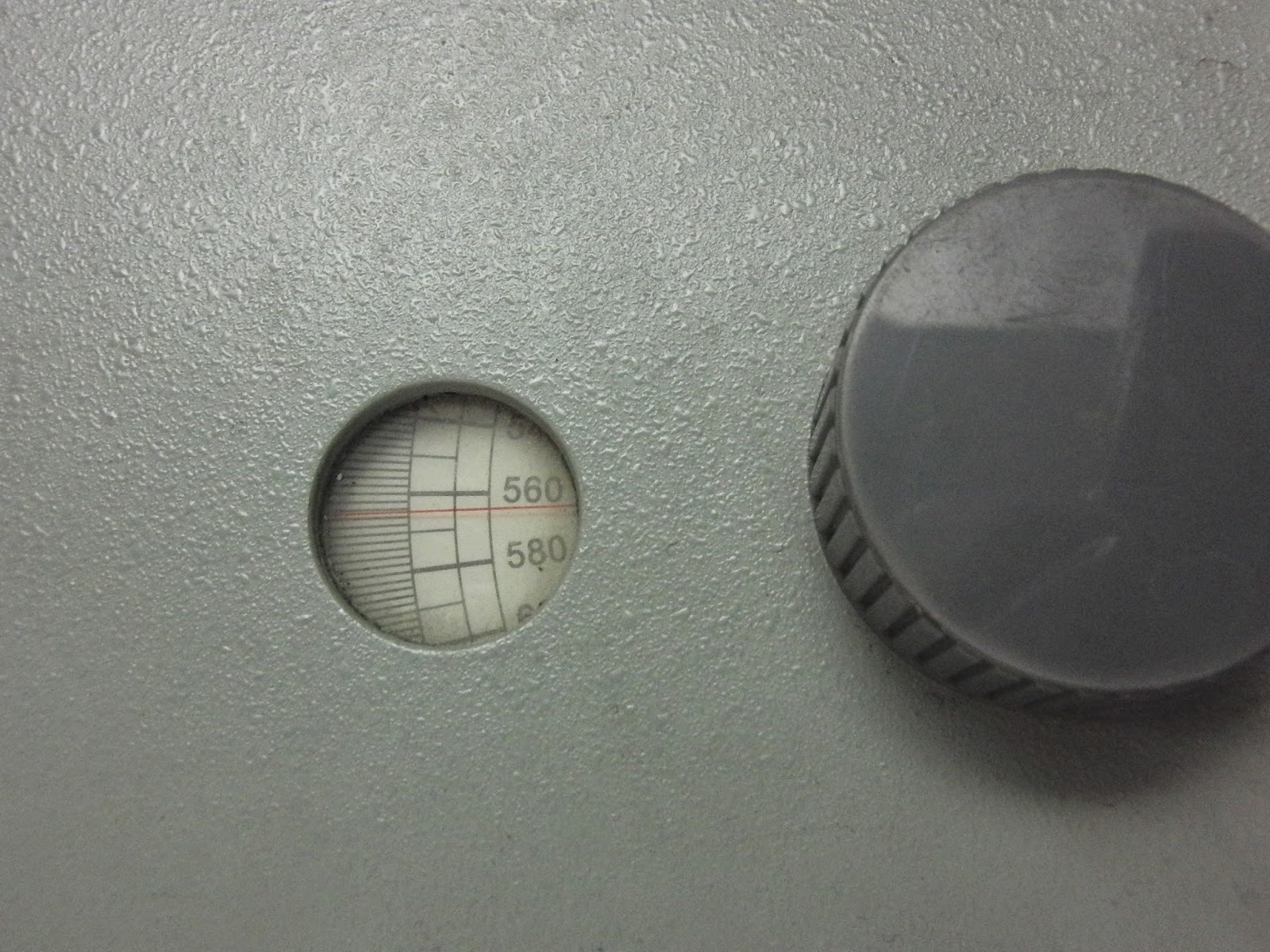Purpose
1.
To understand the mechanism of Belousov–Zhabotinsky
reaction.
2.
To determine the apparent
activation energy of the reaction by potentiometry.
Computer simulation of the Belousov–Zhabotinsky
reaction occurring in a Petri dish (From Wikipedia)
Principles
Belousov–Zhabotinsky reaction
is a very complex reaction and
is thought to involve about 18 different steps. So it is difficult to use
simple way to describe the reaction. The FKN
mechanism is usually introduced to simplify the problem on description of
mechanism.
FKN
Mechanism
|
(R1) HOBr
+ Br- + H+ → Br2 + H2O
|
(R2) HBrO2 +
Br- + H+ → 2HOBr
|
(R3) BrO3- +Br- +2H+ →
HBrO2 + HOBr
|
(R4) 2HBrO2 →
BrO3- + HOBr + H+
|
(R5) BrO3- +
HBrO2 + H+ → 2BrO2 + H2O
|
(R6) BrO2 +
Ce3+ + H+ → HBrO2 + Ce4+
|
(R7) BrO2 +
Ce4+ + H2O → BrO3- + Ce3+ +
2H+
|
(R8) Br2 +
MA → BrMA + Br- + H+
|
(R9) 6Ce4+ +
MA + 2H2O → 6Ce3+ + HCOOH + 2CO2 +
6H+
|
(R10) 4Ce4+ +
BrMA + 2H2O → Br- + 4Ce3+ + HCOOH
+ 2CO2 + 5H+
|
When
the concentration of [Br-] is “higher”
the main reaction path is R1-R2-R3. The
total reaction equation can be represented as follow:
BrO3- +5Br- +6H+ →
3Br2 + 3H2O
The product ,Br2 , is consumed through R8. The route, R1-R2-R3-R8, is called Chain A, and its total reaction
equation can be written as follow:
BrO3-
+ 2Br- + 3CH2(COOH)2 + 3H+ →
3BrCH(COOH)2 + 3H2O
When
the concentration of [Br-] is “lower”
the main reaction path is R5-R6. The
total reaction equation can be represented as follow:
2Ce3+ +
BrO3- + HBrO2 + 3H+ → 2Ce4+ + 2BrO2 + H2O
The product HBrO2 could autocatalysis the reaction,but the concentration of HBrO2
is restricted with R4. We call the path, R4-R5-R6, Chain B. Its total reaction equation:
BrO3-
+ 4Ce3+ + 5H+ → HOBr + 4Ce4+ +
2H2O
Finally,
the route R9-R10 is called Chain C. Its total reaction equation is as follow:
HOBr + 4Ce4+ + 3BrCH(COOH)2 +
H2O → 2Br-+ 4Ce3+ +3CO2
+ 6H+
After
the analysis, we notice the concentration of [Br-],
[HBrO2] and [Ce4+]/[ Ce3+]
are periodically changing according to time. So we can use ion selective electrode to determine
the concentration of bromine ion [Br-], and use platinum electrode with SCE (standard calomel electrode)
to determine the ration of [Ce4+]/[ Ce3+]. The apparent activation energy of the reaction can be determined
by the measurement of the length of induction time at different temperature.
Chemicals
1.
Cerium ammonium nitrate
solution: 0.02M
2.
Malonic acid solution: 0.5M
3.
Sulfuric acid: 0.8M
4.
Potassium bromate: 0.2M
Apparatus
1.
Computer
2.
HS-4 Thermostatic water bath
3.
Reactor
4.
Platinum electrode
5.
Standard Calomel Electrode
6.
Washing bottle
Procedure
1.
Turn on the computer, the recorder
and the circulating water of the thermostatic water bath.
2.
Set up the reactor as the
following picture:
3.
Set the temperature of the
circulating water at 20.00℃. Add 7mL of malonic acid
solution,15 mL of potassium bromate solution, 18 mL sulfuric acid solution in
the clean reactor. Turn on the stirrer and put the electrodes in the reacting
mixture. After the read of the potential is stable, add 2 mL of cerium ammonium
nitrate solution in to the reactant.
4. Observe the color changing. After
the oscillations appear 6~8 times, stop recording and save the data. Raise up
the temperature of the circulating water for 3℃ and repeat the step 3~step 4 until
finish records.
Experimental Record
Raw Data
Figure 1. 20.00℃
Figure 2. 23.00℃
Figure 3. 26.00℃
Figure 4. 29.00℃
Data Process
Table 1. Data Process
Reaction T(K)
|
Induction Time t(s)
|
Oscillating
Period t’(s)
|
293.15
|
625.02
|
123.69
|
296.15
|
493.17
|
79.80
|
299.15
|
407.08
|
73.80
|
302.15
|
330.67
|
54.21
|
Draw the diagrams of ln(1/tinduction)-1/T and ln(1/toscillating)-1/T and do linear fit to find the slopes. And then find the Einduction、Eoscillating from the slopes.
Figure 5. ln(1/tinduction)-1/T
Figure 6. ln(1/toscillating)-1/T
According to Arrhenius equation, the apparent activation
energy can be deduced:
Table 2. Apparent Activation Energy
Slopeinduction
|
Slopeoscillating
|
Apparent Ea (induction) (kJ/mol
)
|
Apparent Ea (oscillating) (kJ/mol )
|
-6207
|
-7545
|
51.605
|
62.729
|
References
[1] 傅献彩, 沈文霞, 姚天扬. 物理化学, 上册欧4 版. 北京:高等教育出版社, 1990:144.
[2] 清华大学化学系物理化学实验编写组. 物理化学实验. 北京:清华大学出版社, 1991.
[3]
Robert C. Wcast Handbook of Chemistry and Physics. Physics. 58th
ed. Ohio: CRC Press, 1977.
[4] 朱文涛. 物理化学. 北京:清华大学出版社,1995.














































